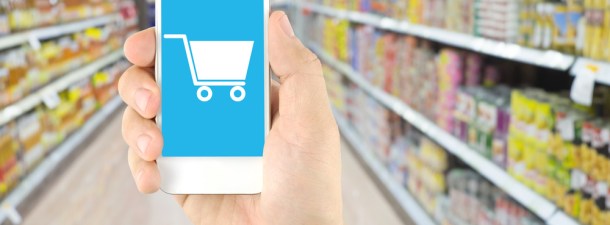You’ve more than likely experienced walking down your local high street to notice that what was once a bustling heart of the community is now a ghost town. What’s the image now? Empty retail units spread everywhere, all crammed in between discount stores and charity shops. The conventionality has disappeared – and in just a few years.
The cause
The rise of online shopping is one of the major contributors to the decline of our high streets and retail stores. According to RetailResearch.org, e-commerce is the fastest growing retail market in Europe, with sales in the UK, Germany, France, Sweden, Italy, the Netherlands, Poland and Spain expected to grow from £156.67 bn (€185.39 bn) in 2015 (+18.4%) to a staggering £185.44 bn (€219.44 bn) in 2016. In the US, such sales will reach $398.78 bn [£245.96 bn] in 2016.
Why such success here? It comes down to the fact that with the internet, you’re able to access e-commerce stores at any time of the day and all week. OK, you may have to wait a few days for an order to arrive at your address, but the flexibility is what’s attractive. But is there any hope left for more traditional forms of shopping? The answer is technology. Let’s sift through some examples.
QR codes for more interactive shopping
QR codes have been around for a while now, but they’re certainly popular in the shopping world. In fact, American electronics retailer Best Buy started implementing them in its stores way back in 2010. The tags are placed on in-store displays and even packaging, allowing customers to find out more about particular products – a natural urge we all have when shopping. This makes decision-making a lot easier.
Actual QR code stores are even more ambitious. In 2009, Tesco took over a subway station in Seoul, South Korea, with one of them. The virtual store was branded just like any other Tesco supermarket but wasn’t stocked with any physical products. Instead, there were images of items and QR codes the next to them.
The idea of this was to create a more interactive shopping experience for customers, and Tesco reaped the rewards with a 76% customer increase and a 130% profit increase. It’s since been installing smaller versions of the stores in bus shelters across the Asian nation.
Smart shelves to make in-store adverts more relevant
Adverts can be so annoying. You just wonder sometimes what they have to do with you. An example: you’re allergic to tomatoes, yet you’ve had a supermarket email you about a new type of ketchup. What’s the point?
Mondelez International, the maker of brands such as Oreo and Ritz crackers, envisions a future full of supermarket smart shelves. They would be placed at the checkout and near snacks and would use sensors to provide adverts with relevant items and deals based on demographic information about shoppers.
For example, if you’re a teenager, you could be targeted with shelf-based adverts for chewing gum and sweets – and maybe coffee if you’re an adult just about to go into work. If you were to pick any of these items up, weights on the shelf would sense this and offer you a coupon to make you more likely to make a purchase. Essentially, these shelves would make shopping far more relevant.
New ways of paying for products
The days of walking up to a person on the checkout to pay for your shopping are nearly over. New ways of paying for things are the direct cause of this. Apple Pay, which launched in the US in October 2014 and only last month in the UK, is one of these innovations.
Apple’s very own digital wallet service uses NFC (near field communication) technology to let you make payments at contactless points of sale and in apps. What’s great about Apple’s variant is that it doesn’t need specific contactless payment terminals and will work Visa’s PayWave, MasterCard’s PayPass and American Express’s ExpressPay terminals.
You needn’t even use an individual service to pay. Many retail chains have their own digital payment methods. With the official Starbucks app, for example, you’re able to pay for purchases conveniently from your smartphone and also earn discounts and rewards. This shows that the coffeehouse has identified a key customer trend and put it into action.
Conclusion
The fact remains that it can be good to have both physical and online retail stores. They work together to create a far more flexible experience. Perhaps you’re in a rush to get your friend a birthday present, so you pay a quick visit to your local supermarket. But if you have plenty of time to look and choose something for them, and have other commitments, shopping online will no doubt be the most convenient option.









